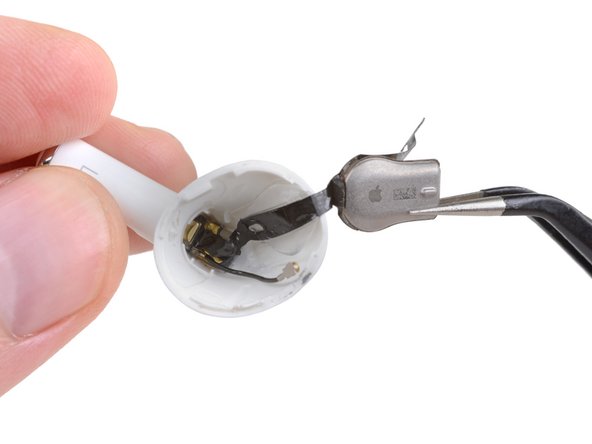crwdns2935425:010crwdne2935425:0
crwdns2931653:010crwdne2931653:0






-
Back at the tail end of the AirPod, we disconnect a cute little coax connector and untangle Apple's custom SiP, where the H1 and other chips live.
-
Try as we might, we aren't able to pry apart this package—we'll have to take Apple at their word that it's just silicon in there, and not some form of magic.
-
Update—thanks to the awesome community, we now have some pretty good guesses as to what these chips are:
-
Most likely a Bosch IMU (Inertial Measuring Unit), which helps with Apple's Spatial Audio feature
-
Most likely an STMicroelectronics accelerometer, which helps with speech detection and noise cancellation
crwdns2944171:0crwdnd2944171:0crwdnd2944171:0crwdnd2944171:0crwdne2944171:0